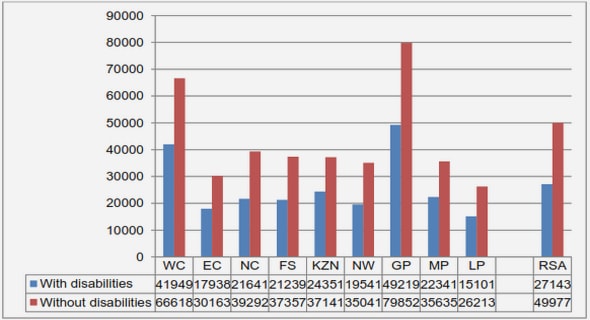(Downloads - 0)
For more info about our services contact : help@bestpfe.com
Table of contents
INTRODUCTION
Objectives
Structure of the thesis
CHAPTER 1: LITERATURE STUDY
1.1 Fundamentals of solid oxide cell (SOC)
1.1.1 Electrolyte
1.1.2 Air/oxygen electrode
1.13 Fuel/hydrogen electrode
1.1.4 Sealing materials and interconnects
1.2 Oxygen reduction/evolution reaction
1.2.1 Triple-phase boundary (TPB)
1.2.2 Factors affecting oxygen reduction/evolution reaction (ORR and OER)
1.3 Ruddlesden-Popper phase: rare-earth nickelates
1.4 Degradation of several MIEC oxygen electrode materials for SOC
1.4.1 Degradation mechanism of LSCF oxygen electrode
1.4.2 Degradation mechanism of rare-earth nickelates
CHAPTER 2: FABRICATION AND CHARACTERIZATION TECHNIQUES
2.1 Electrolytes for symmetrical and complete cells
2.2 Fabrication techniques
2.2.1 Sol-gel auto-combustion to prepare LPNO powder for screen printing
2.2.2 Screen printing (SP)
2.2.3 Electrostatic spray deposition (ESD)
2.2.4 Design of the LPNO oxygen electrode
2.3 Microstructural characterization techniques
2.3.1 Scanning electron microscopy (SEM)
2.3.2 Focused ion beam-scanning electron microscopy (FIB-SEM) tomography
2.4 Structural characterization techniques
2.4.1 Laboratory X-ray diffraction (XRD): room temperature and in-situ XRD
2.4.2 Synchrotron-based X-ray: Lamellae preparation by plasma-FIB, micro-X-ray diffraction (μ XRD), and micro-X-ray fluorescence (μ
2.5 Electrochemical characterization technique: Electrochemical impedance spectroscopy (EIS)
2.6 Long-term durability tests
2.6.1 Long-term test on the symmetrical cell
2.6.2 Long-term test on the complete cell
CHAPTER 3: IMPROVING THE ELECTRODE PERFORMANCE OF RARE-EARTH NICKELATES BY IMPROVING THE MICROSTRUCTURE AND ARCHITECTURAL DESIGN
3.1 Introduction
3.2 Preliminary experiments
3.2.1 Optimized deposition parameters by SP and ESD
3.2.1.1 SP layer: binder for the ink
3.2.1.2 ESD layer: solution stabilization, deposition time, and hierarchical microstructure
3.2.2 Electrochemical performance of coral-type La2-xPrxNiO4+δ (x = 0, 1, 2)
3.2.3 Reproducibility
3.3 Structural characterization of LPNO as a powder, SP layer, and ESD layers
3.4 Equivalent electrical circuit model for EIS data fitting
3.5 Influence of the electrode/electrolyte interface quality on the performance of the LPNO electrode
3.6 Influence of the secondary higher-order phase on the electrochemical performance of the ESD layer
3.7 Influence of the CCL microstructure on the performance of the electrode
3.8 Influence of the various architectural designs on the performance of the electrode
3.9 Summary and conclusions
CHAPTER 4: DURABILITY STUDY ON THE SYMMETRICAL AND COMPLETE CELLS
4.1 Introduction
4.2 Durability study on the symmetrical cell
4.2.1 Pre-test measurements
4.2.2 Long-term measurement in electrolysis and fuel cell modes (idc = ±300 mA cm-2)
4.3 Preliminary durability study on the complete cell
4.3.1 Preliminary durability test on CCell 1: GDC barrier layer by screen printing
4.3.2 Preliminary test on CCell 2: GDC barrier layer by RF magnetron sputtering
4.4 Summary and conclusions
CHAPTER 5: POST-MORTEM STRUCTURAL AND MICROSTRUCTURAL CHARACTERIZATIONS
5.1 Introduction
5.2 Post-mortem microstructural characterization: SEM and 3D reconstruction by FIB-SEM
5.2.1 Characterization of the samples operated in the electrolysis mode
5.2.2 Characterization of the sample operated in fuel cell mode
5.3 Post-mortem structural characterization: synchrotron-based μ-XRD and μ-XRF
5.3.1 Pristine cell
5.3.1.1 Laboratory XRD characterizations for ESD and SP layers
5.3.1.2 Synchrotron-based μ-XRD and μ-XRF characterizations for ESD-SP double-layer electrode
5.3.2 Thermally-aged cell
5.3.3 Long-term test in electrolysis mode (anodic polarization): symmetrical and complete cells
5.3.3.1 Anodic side of the symmetrical cell (sample 3 or SCell-anodic)
5.3.3.2 Anodically-aged oxygen electrode of the complete cell (sample 4 or CCell 1)
5.3.4 Long-term test in fuel cell mode (cathodic polarization): symmetrical cell
5.4 Summary and conclusions
GLOBAL CONCLUSIONS AND PERSPECTIVES
Conclusions
Perspectives
REFERENCES



